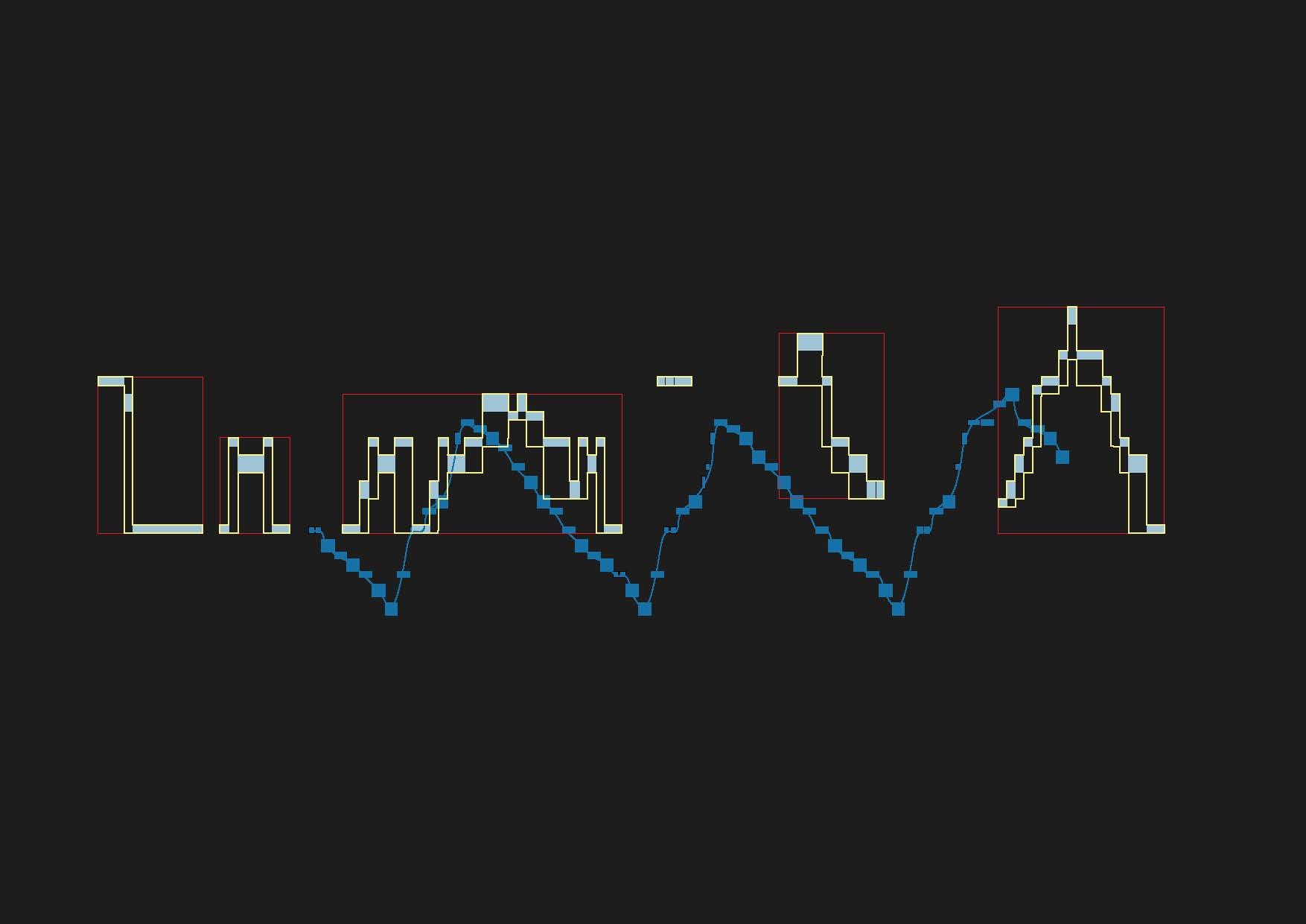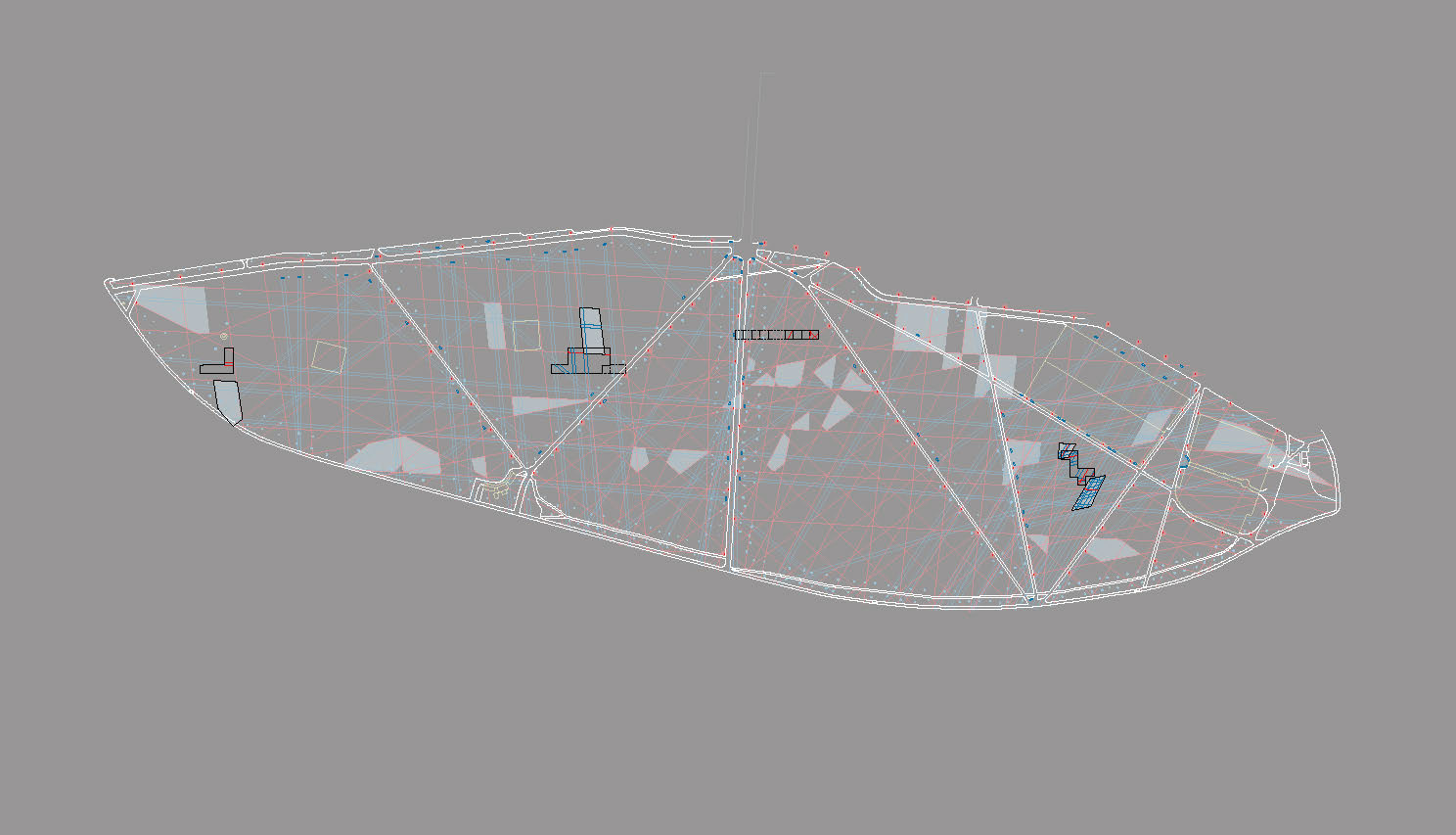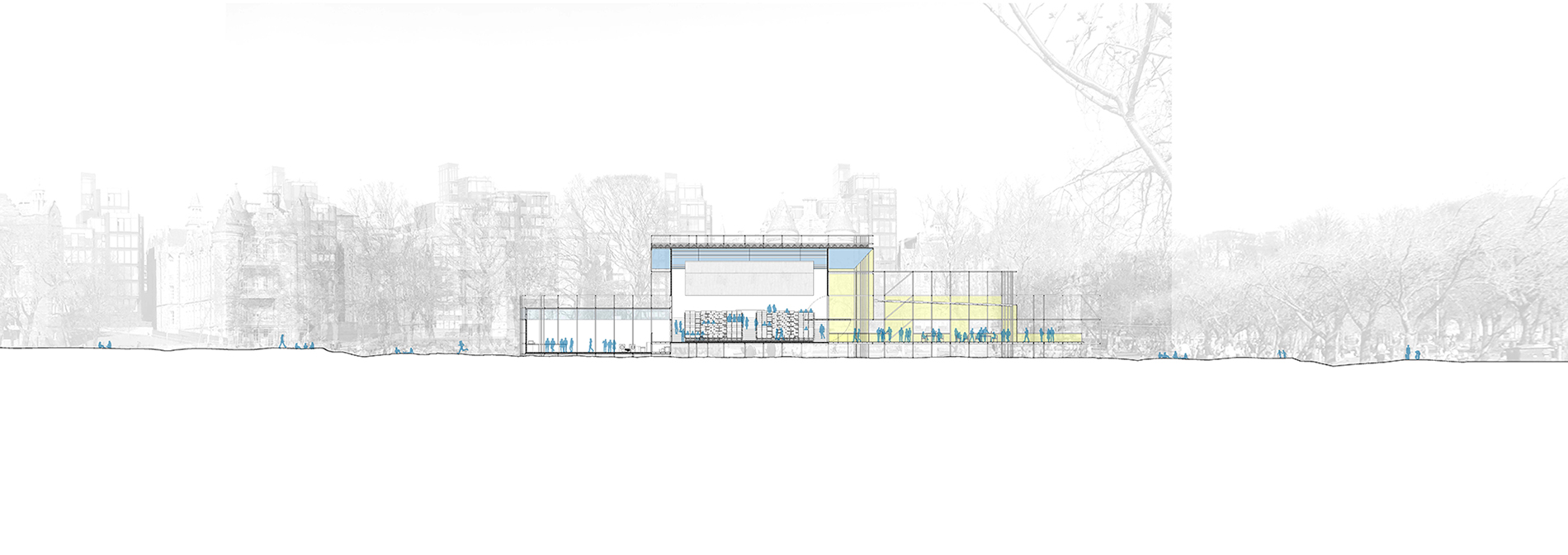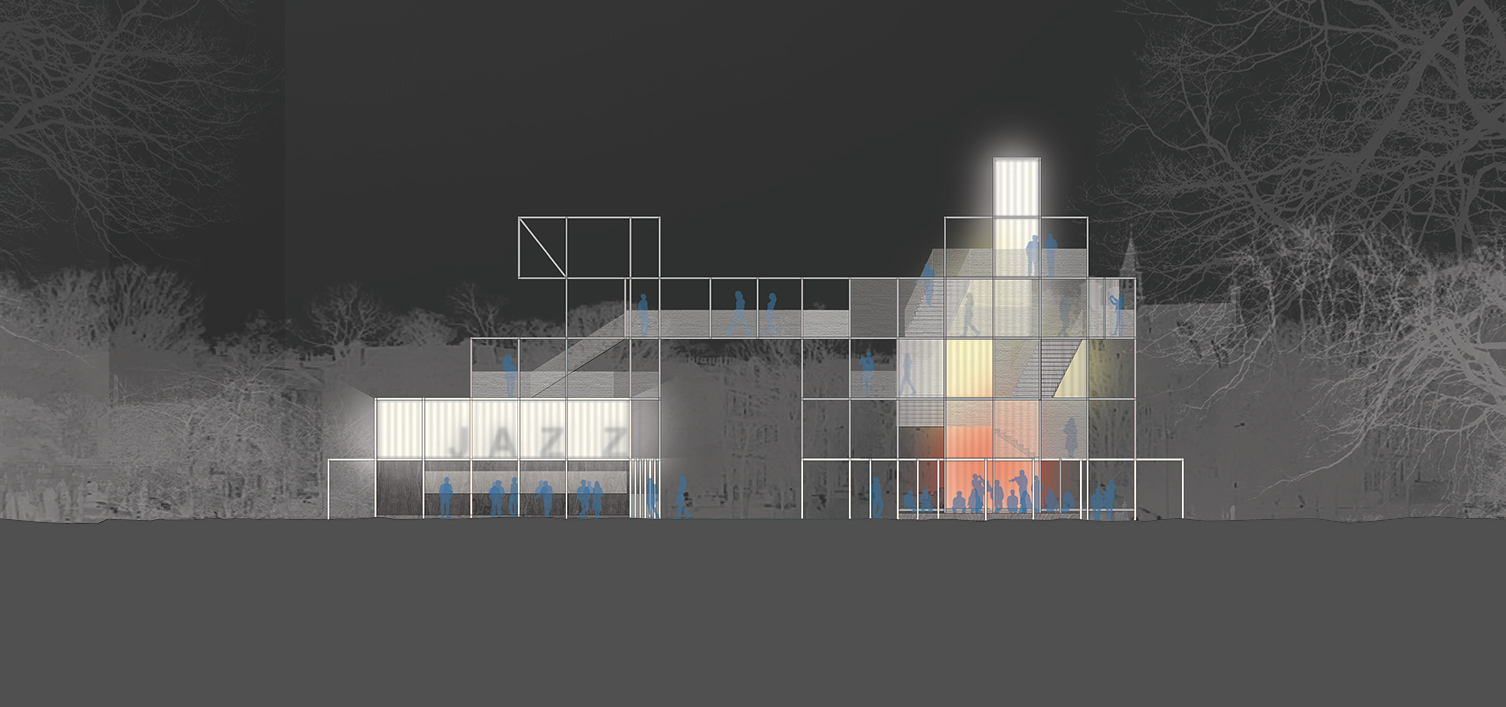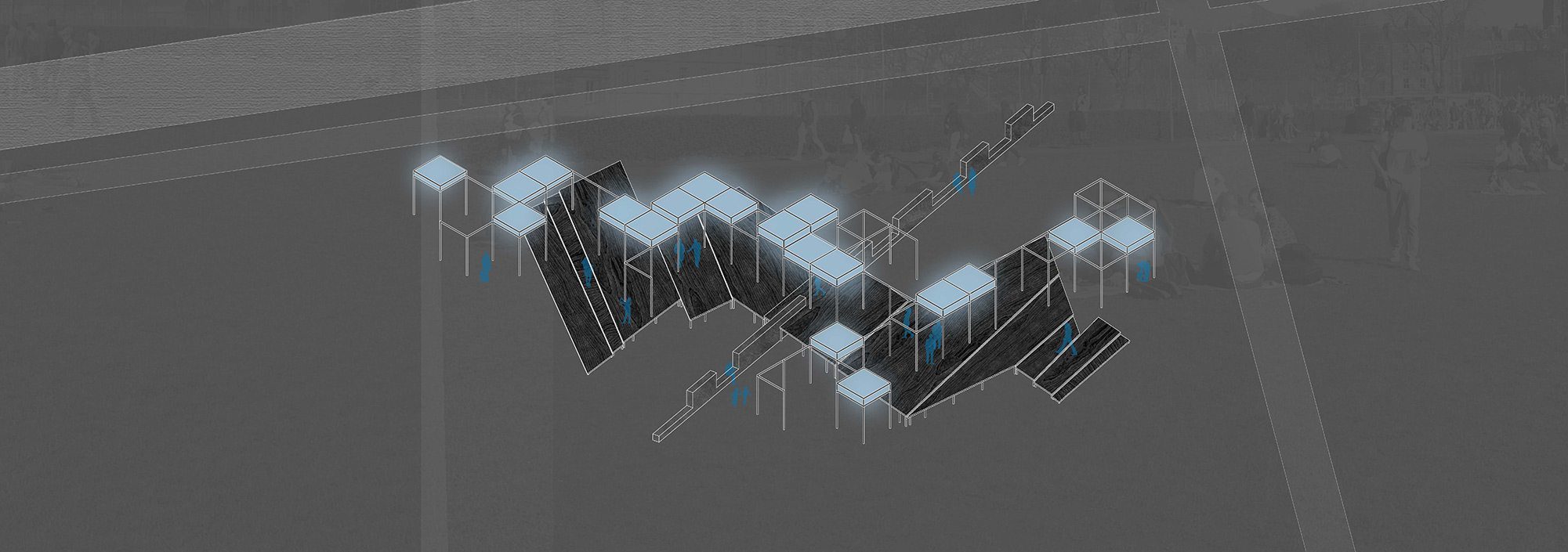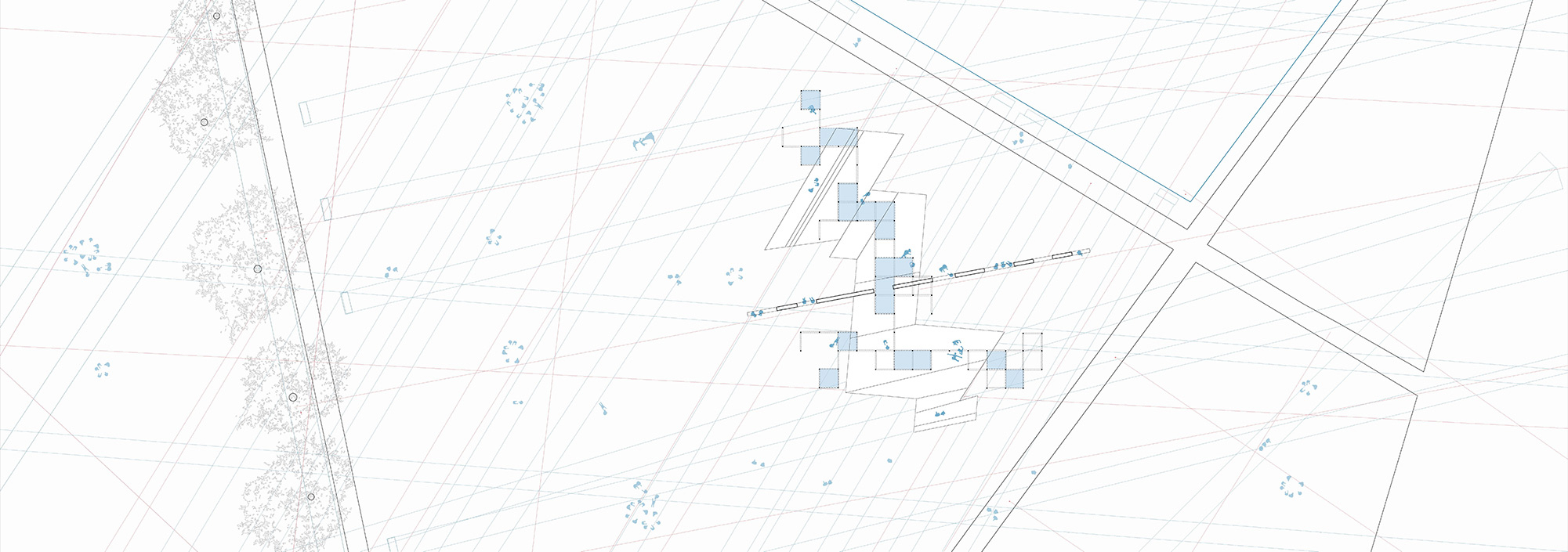Transposing So What proposes four temporary structures for Edinburgh Jazz Festival which aim to celebrate and enhance the spirit of live music in Edinburgh. This involves the consideration of jazz improvisation, where musicians respond to changes in the music that they play to create an expression of the given harmonic constraints of the music. In this spirit, a tectonic system is borne which, acting as the musician, can be adapted according to differing structural, programmatic and atmospheric requirements in different locations.
The project thus attempts to transpose Miles Davis’ legendary Jazz piece, So What, using a new method of composition. In this case, the tectonic system plays an arrangement written for a unique instrument which is specific to Edinburgh, the Meadows. It works alongside the capabilities of this instrument in order to encapsulate an essence of the city’s rhythms in the new arrangement of the piece.
The four different structures created include an auditorium, a jazz bar, a box office and a recreational space, each composed of a scaffolding frame and panel system which creates a bustling attraction during the day, and a glowing ambience at night. The composition considers left behind elements found on the Meadows such as the Mason’s Pillars which commemorate the Edinburgh International Exhibition of 1886. In keeping with this tradition, the jazz festival structures leave behind certain elements which remember the festival and contribute to the busy life of the Meadows.
The four movements of the composition are therefore performed in a unique way, festival-goers can feel and see it, whilst the original arrangement’s spirit will live on in the live music organised by the festival which will be performed within.
Transposing So What celebrates jazz, live music, gatherings of people and the city in which these things take place.







